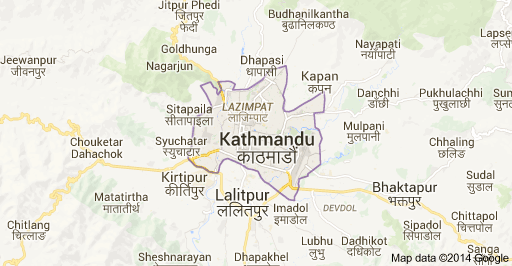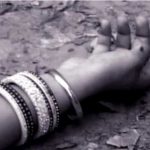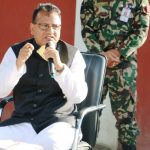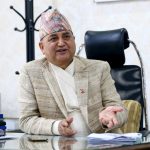Pabitra Guragain
Kathmandu: A collection of copper plate arts, a video game developed by children, a peace pond, a Sarangi (traditional Nepali musical instrument) supported by a sensor and an unique show called all-party meet by Kabir Raj Lama enthralled visitors for ten days at the Nepal Art Council. The very distinct type of art exhibition called Yantra 4.0 showcased at Bagmati Art gallery of the Council’s second floor wrapped up on Tuesday.
The expo was jointly organized by the Siddartha Art Foundation Education Initiative, Karkhana and Robotics Association of Nepal. The expo displaying a fusion of art, science and technology in the works of innovative artists and engineers was highly successful in giving a new taste to visitors including the young and adults. Artist Rai has successfully used engineering to make artistic work more interactive thereby incorporating a greater number of visitors than any typical art exhibition would attract.
In the sarbadaliya baithak or all party- meet section of the exhibition artist Lama, who holds a specialized degree on woodcut printmaking art from Japan, tried to raise the sociopolitical issues with the presentation of 13 woodcut printmaking portraits of former Prime Ministers also including the late Krishna Prasad Bhattarai, Manmohan Adhikari, Surya Bahadur Thapa and Girija Prasad Koirala. Also incorporated was the portrait of incumbent Prime Minister KP Sharma Oli on a Nepali paper installed on wooden plank inside a dark chamber named sarbadaliya baithak, which has now become a norm in Nepali politics, no matter who the head of the government is.
The political figures were those who reached the pinnacle of Nepali politics to lead the government in the past 25 years since the restoration of democracy in 1990. These portraits were connected with a computerised system which aired recorded speeches ofthe leaders once any visitor stands in front of the respective portrait. However, artist Lama said the process irritated visitors instead of giving them entertainment as people have no more interest in listening to political speeches which has long dominated the Nepali politics. He believes that his creation would exert pressure to these leaders (except the four passed away)to do something for the betterment of the country and prove their existence in action.
“Since 1990, Nepal has seen countless coalition governments taking the help of the State power. The change in political circle is so incessant that most Nepalis will be unable to name all the Prime Ministers who have assumed office in the past 25 years”, says artist Lama.
Party ideologies in Nepal mean there is never consensus and thus no action. The current crisis is just one example of the stagnation brought about by the change in political representation in power. All Nepali, young, and old have been left indifferent because the system simply recycles a few individuals every few years. “Politics and democracy, the supposed path to betterment of the society, seems to lead to betterment of only some individuals and not the country and the people” argues Lama.
Sharing his experiences of one of its kind expo held in the capital, Lama said he was encouraged by the admiration of visitors of his innovative works, but was dismayed at no political leaders making their appearance in the expo.
The event caught the attention of visitors including college students and foreigners. It welcomed over 200 visitors every day. Sheela Bogati, a bachelor level student in the capital, said was mesmerized to such the expo which is satirical as well as a respect to the leaders who have run the government in the past 25 years. The artist had done his best to alert people about the state of political affairs in the country, saidBogati, the daughter of former Minister for Land Reform and Management Jagat Bahadur Bogati.
Meanwhile artist Lama, who despite having options to settle down in Japan upon completing his specialised degree in 2014, returned home the same year. A sense of responsibility of doing something for the country brought him back to his roots. According to him, the number of artists involved in this genre of art professionally are minimal. He feels the need of development of necessary physical infrastructure in universities to beginspecialised course on woodcut arts, the traditional genre of arts that originated from China.
Lama is also looking forward to working with the concerned government authorities to promote this unique and somehow complex genre of art and is hopeful of support and cooperation from all sides concerned. The exhibition, he thinks, will prove a catalyst is introducing an innovative form of art in the country.






